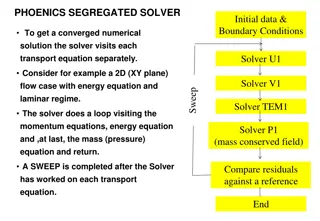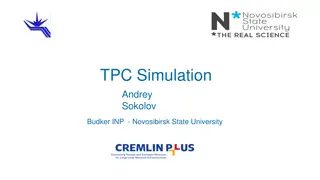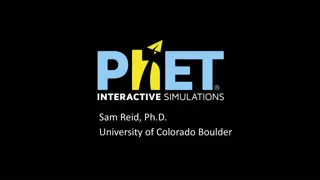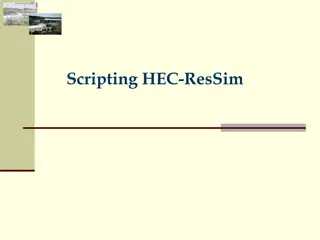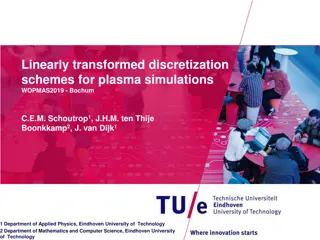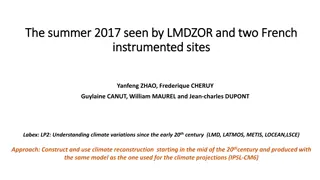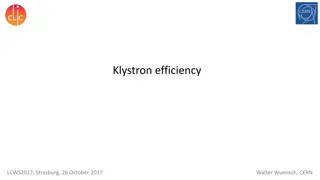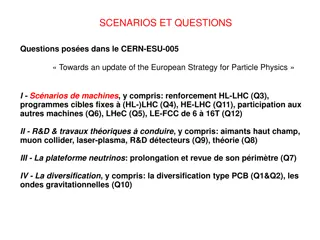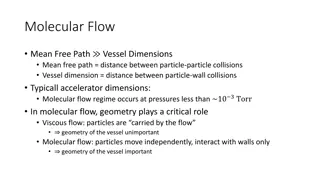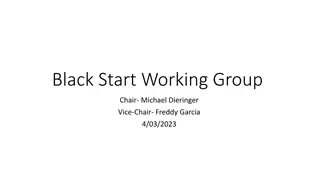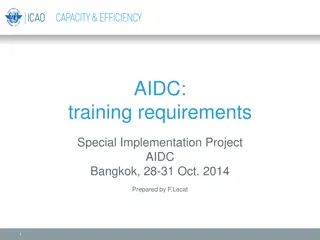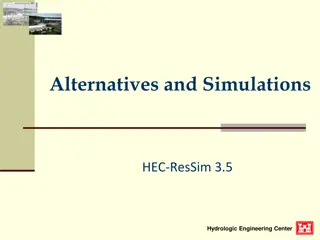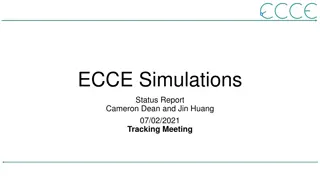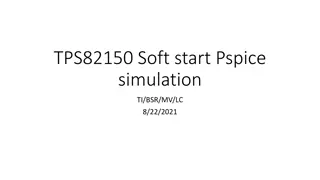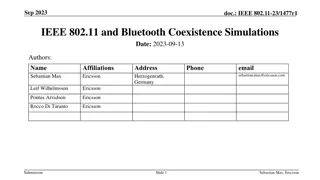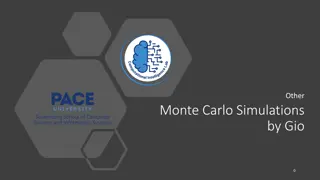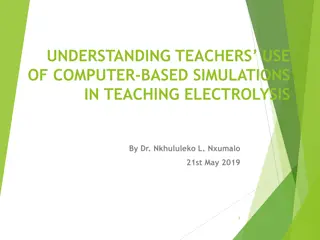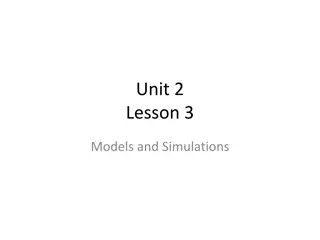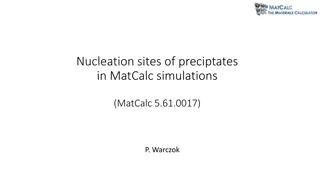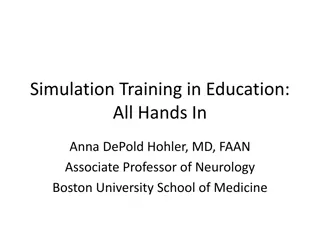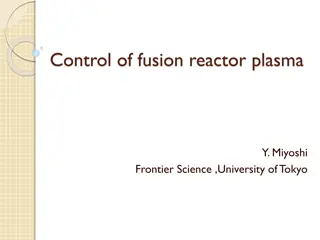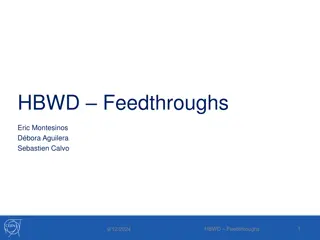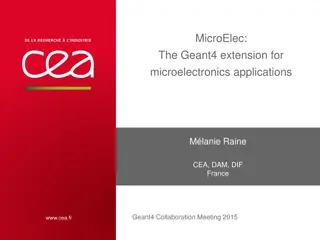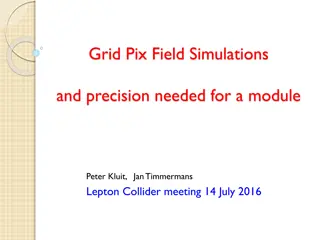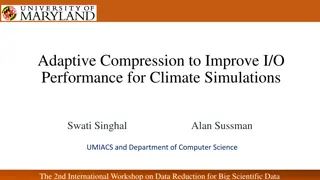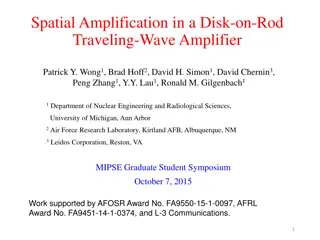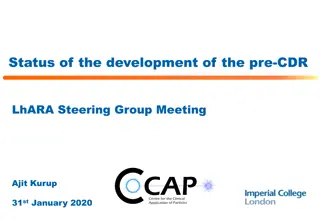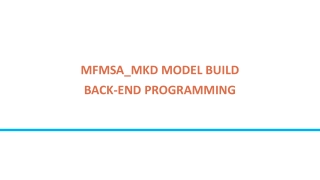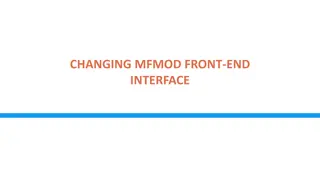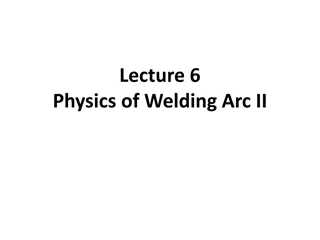CLIC Start-to-End Simulations Overview
Review of CLIC start-to-end simulations including main simulation codes, past results, and upcoming work. Focus on realistic performance assessments, tolerance evaluations, emittance transport, mitigation techniques, operational scenarios, luminosity studies, and tools used. Detailed information provided on CLIC layout, imperfections, and beam dynamics simulations.
Download Presentation

Please find below an Image/Link to download the presentation.
The content on the website is provided AS IS for your information and personal use only. It may not be sold, licensed, or shared on other websites without obtaining consent from the author. Download presentation by click this link. If you encounter any issues during the download, it is possible that the publisher has removed the file from their server.
E N D
Presentation Transcript
CLIC Start-to-end Simulations Andrea Latina, CERN AWLC - May 13 2014 - Fermilab
Contents Start-to-end simulations Review of main simulation codes Some results obtained in the past Work to be done 2
Start-to-end simulations Perform as-realistic-as-possible simulations, to assess performance and evaluate tolerances Ensure low emittance transport throughout the machine under the effects of static and dynamic imperfections Test mitigation techniques Simulate operational scenarios and failures Perform integrated luminosity studies 3
Static Imperfections and emittance budget RTML ML 5
Some of the main tools SIRE: Intra-beam scattering Damping ring MAD-X / PTC Lattice design Damping ring tracking simulations PLACET Main beam / drive beam + BDSIM + HTGEN GUINEA-PIG Beam-beam Machine detector interface; Luminosity measurement RF Structure Library Rebaselining 6
Main CLIC beam dynamics S2E simulations tools PLACET: Full 6d tracking Incoherent Synchrotron radiation in all magnets Coherent Synchrotron radiation in bends Single-bunch wakefields, L and T, in RF structures and collimators Long-range wakefields in RF structures Static/dynamic errors Ground motion; including realistic stabilization systems Halo generation and transport CLIC Drive beam Octave/Python interface for complex simulation scenarios / customization Optimized for speed; supports openMP and MPI Accepts solenoid field-maps for MDI studies PLACET+BDSIM: PLACET tracking w/Halo + BDSIM secondary particles generation PLACET + GUINEA-PIG: PLACET tracking + GUINEA-PIG beam-beam 8
Some of the work performed in the past As extensively documented in the CDR and subsequent CLIC-Notes and proceedings Tracking through RTML + ML +BDS + IP Perfect machine Beam transport and integrated luminosity studies RTML: transport, feed-forward correction schemes ML: BBA; dynamic imperfections, feedback loops ML+BDS: BBA, dynamic imperfections, stabilization system, feedback BDS+IP: tuning, machine detector interface Drive Beam beam dynamics ILC: Benchmark of results Original studies: BBA in ML and RTML, tuning knobs Impact of couplers in ML and RTML 9
Structure alignment using wakefield monitors 11
Work that has to be done BBA throughout RTML subsystems, ML and crosstalk, longitudinal phase- space correlations (BC to ML) Drive beam: Transport (in progress) Simulation of Drive Beam recombination scheme (in progress) To extend PLACET Two-sided simulations Simulate BBA and integrated tuning studies using realistic diagnostic signals Inject realistic distribution from the damping rings Experimental tests of simulated components (e.g. wakefields), or entire algorithms (e.g. BBA) 12




